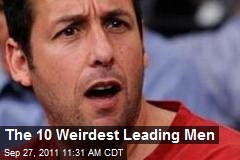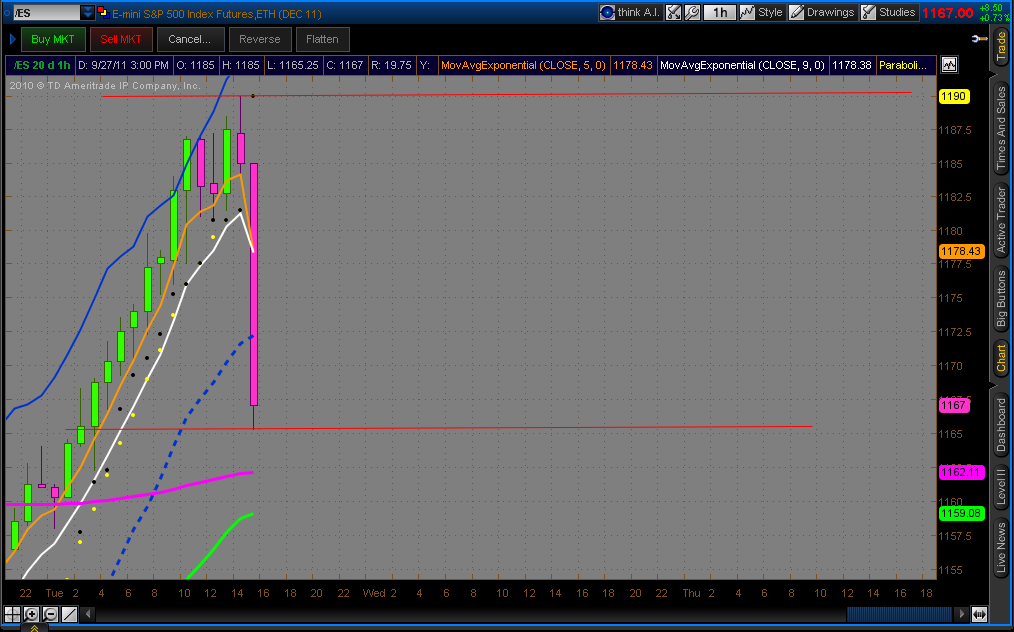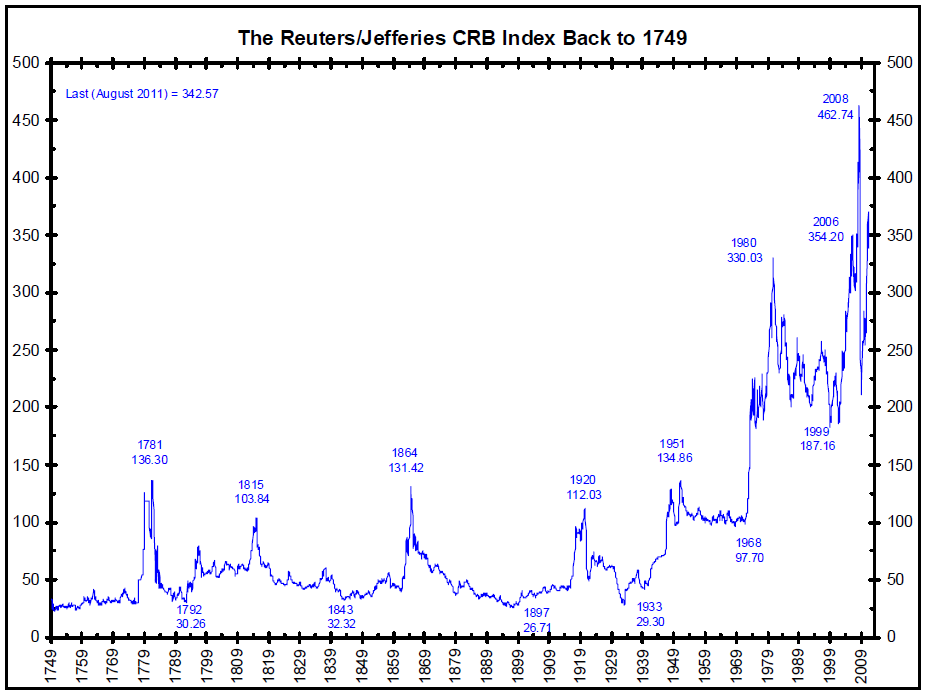This Time May Not Be That Different: Labor Markets, the Great Recession and the (Not So Great) Recovery
Murat Tasci
Federal Reserve Bank of Cleveland
Tue 9/27/2011
>
The last three U.S. recessions have been followed by "jobless recoveries." The lack of robust job growth once GDP starts to pick up has a lot people asking if labor markets have changed in some fundamental way. I look at employment and unemployment growth in every recession since the 1950s and find that the current levels of these indicators can be explained by the severity of the Great Recession and the slow growth of GDP in the recovery.
The economy has been in recovery for almost two years. Still, the labor market is in bad shape. More than 14 million people are officially unemployed, and many others remain underemployed or have left the labor force. Not surprisingly, net job creation has also been relatively anemic, and we have gained back less than 20 percent of the jobs that were lost during the recession. The situation has analysts asking if this "jobless recovery" means that there is now something fundamentally different about the labor market.
In this Commentary, we show that the labor market's performance has largely been consistent with the path of output during the recession and the subsequent recovery. The jobless nature of the current recovery stems from weak GDP growth. There is little evidence of a fundamental change in the labor market.
The Labor Market this Time Around
The Great Recession lasted about 15 months (December 2007 to June 2009) and was the country's worst recession since the Great Depression. The recovery has also been one of the weakest on record. Likewise, labor market conditions have not improved much during the recovery.
We look at those conditions and compare them across business cycles to see if they are out of line in some way with historical patterns. We use two major indicators to measure the health of the labor market—payroll employment and the unemployment rate. (To see a discussion of the difference in these indicators, see "Employment Surveys Are Telling the Same (Sad) Story").
Payroll employment fell by 5.6 percent over the course of the recession. This was the largest drop in the employment series since the 1950s. Employment continued to fall even after the recession was over, until it finally bottomed out in December 2009. The total employment loss was 6.2 percent. Currently, employment remains 5 percent below its prerecession level, representing a net loss to date of 6.8 million jobs. In previous recessionary cycles, it took roughly two years to get back to prerecession employment levels. As of now, the U.S. economy is far away from this breakeven point.
Not unexpectedly, the unemployment rate tells a similar story. The rise in the unemployment rate from 5 percent to 10.1 percent over this cycle was the largest increase in the unemployment rate since the Great Depression. In the recovery, the unemployment rate has come down by only 1 percentage point. The unemployment rate does typically adjust more slowly than employment during the recovery phase of the business cycle. But the persistently high level of unemployment observed in the current cycle is unusual by historical standards. All in all, figures 1 and 2 paint an unusually bleak picture of the labor market during the recent recession and recovery. Many observers look at such pictures and conclude that labor markets are behaving anomalously. The sharp rise in the unemployment rate and the decline in payroll employment look exceptionally large in size, and the pace of recovery seems exceptionally slow.


Economists have suggested a number of reasons for the uncharacteristic behavior. Ideas include structural change, sectoral reallocation, and a decline in the matching efficiency of labor markets. We think there may be some truth behind each of these ideas, but they are not the major force at work. The key feature of the current cycle that has helped shape the evolution of the labor market is the path of output during the recession and recovery. We argue that once we take into account the size of the output loss during the recession and the magnitude of the rebound during the recovery, these labor market trends look a lot less puzzling.
It Was a Terrible Recession After All
According to the latest gross domestic product (GDP) estimates, aggregate economic activity declined much more over the course of the last recession than we initially thought. The Bureau of Economic Analysis (BEA) regularly revises its estimates of GDP. The changes reflect new data that become available as well as methodological improvements. The most recent revision showed that U.S. GDP, the broadest measure of aggregate economic activity, declined more than 5 percent during the recession.
There is nothing good about this news per se, but it does explain the severity of the labor market's troubles. When the economy experiences a bad aggregate shock and aggregate output falls, it is normal to see employment fall and unemployment rise. The magnitude of the impact on the labor market will depend on the size and nature of the aggregate shock; deeper recessions imply larger losses in employment and greater increases in the unemployment rate.
Figure 3 shows this relationship between the shock to GDP and the decline in payroll employment for all recessions since the 1950s. The lengths of the recessions are represented by the size of the bubbles. Not surprisingly, deeper recessions lead to greater employment losses, though there is considerable variation in the relationship. The 1948-1949 recession had a relatively steep employment loss but experienced only a modest decline in output, whereas the opposite is true for the 1973-1975 recession.

The current recession sits in the northeast corner of the chart—representing both a steep decline in output and a steep fall in employment. The trend lines in the figure summarize the linear association between these two variables, with and without the last recession. Even though we have only a limited number of observations, it seems as if the last recession did change the relationship somewhat. The trend lines suggest that the employment loss that would be associated with 5.1 percent decline in GDP would have been less than what we actually observed, more so for the trend that does not include the recent recession.
A similar relationship exists between the size of the recession and the change in the unemployment rate. One needs to keep in mind that the unemployment rate usually lags the cycle by a few quarters. In the last episode this meant that unemployment rate continued to increase two more quarters after the recession's end. Nevertheless, in figure 4 we still see a positive correlation between the size of the output loss during the recession and the impact on the unemployment rate. It also shows that there is some variation in the relationship, but the last episode still stands out as somewhat an outlier. The unemployment rate increased from 4.8 percent in the fourth quarter of 2007 to 9.3 percent at the end of the recession. In the rest of the episodes, we observed changes between 0.5 and 3.5 percentage points. Note that the trend line without the recent recession suggests that the unemployment rate increase consistent with a recession of this magnitude would have been somewhat smaller.

Recessionary episodes over the past six decades show a consistent pattern between the size of the aggregate shock, measured by the peak to trough decline in GDP, and the magnitude of the deterioration in the labor market. Clearly, there is considerable variation in the relationship, but the last recession does not stand out as a large outlier. What is unusual is the size of the aggregate shock.
Maybe the Recovery Is Sluggish, Not the Labor Market
Explaining what happened during the recession by the sheer size of the contraction in real GDP still leaves us with the task of explaining what happened during the recovery. Figures 1 and 2 suggest that the current recovery in the labor market is exceptionally slow, too. In principle, we can repeat the exercise in the previous section for the recoveries to see to what extent the strength of aggregate output growth right after a recession can account for the behavior of the labor market during the early phase of the recovery.
Looking at 11 past recovery episodes, we see considerable variation in GDP growth. Average growth across all episodes was about 9.4 percent (4.7 percent annually) from the business cycle trough to two years out. The last three recoveries, including the current one, stand out as particularly sluggish: GDP grew only 5.6 percent over two years (or 2.8 percent annually). The recovery from the 1980 recession is an exception, as it was effectively cut short by the 1982 recession.
Figure 5 plots the relationship between the strength of the recovery in output and the payroll employment gains for all recessions after 1948. This time, the size of the bubbles indicates the depth of the GDP loss during the recession prior to the recovery. We measure the growth in GDP and payrolls during the first eight quarters of the recovery, starting from its trough.

The figure shows a relatively strong correlation between GDP growth and employment growth in recoveries. The current recovery is located in the southwest corner of the chart—indicating that the recovery has experienced both weak GDP growth and weak employment growth. Indeed, based on the patterns observed in prior recoveries, payroll employment growth is just where one would expect it to be given the growth in GDP. Moreover, all the previous recovery episodes that did not lead to significant employment gains—the jobless recoveries—are associated with weak output recoveries.
The relationship between changes in the unemployment rate and output growth is almost as strong as for employment. Figure 6 plots this relationship over the same recovery episodes, looking two years out after the end of the recession. The relationship is somewhat weaker partly because unemployment rates typically lag the recovery, and so we often see less improvement in unemployment rates early in the recovery phase. Nevertheless, the last three recoveries again stand out. They stand out, not because unemployment stayed exceptionally high for too long, but because GDP did not recover much at all. In some sense, the extent of the labor market recovery looks very consistent with the past episodes, once one factors in the sluggish recovery of output.

Weaker Recoveries?
So far we have argued that cyclical changes in labor market variables, such as payroll employment and unemployment, are correlated with the cyclical movements in real output over time. Once we see this point, it becomes clear that the actual question we might want to ask is why are recoveries getting weaker and weaker.
A trend decline in output growth over time might be partly responsible. Real GDP grew 3.6 percent on average from 1947 to 1984 but only 2.6 percent after 1984. Even more relevant for understanding the jobless recoveries is the fact that output growth is getting slower during the early phase of recoveries.
The average (annualized) growth rate per quarter for the first two years of recoveries has been declining over time, especially since 1984 (table 1). Before 1984, GDP grew faster than the trend during the first two years of the recovery (4.7 percent relative to 3.6 percent for the whole cycle). However, after 1984 the average growth early on declined to 2.8 percent (relative to 2.6 percent). The slowing growth trend after 1984 is the real puzzle.
Table 1. Annualized GDP Growth Rates in Different Parts of the Business Cycle
| Recession | GDP decline in recession, percent | Two-year recovery, percent | Remainder of cycle, percent |
| 1948-49 | 3.63 | 8.12 | 6.55 |
| 1953-54 | 3.48 | 4.69 | 3.71 |
| 1957-58 | 7.54 | 6.30 | — |
| 1960-61 | 2.14 | 5.17 | 4.96 |
| 1969-70 | 0.48 | 5.69 | 5.19 |
| 1973-75 | 2.55 | 4.64 | 4.26 |
| 1980 | 4.45 | 0.80 | — |
| 1981-82 | 2.70 | 6.25 | 4.18 |
| 1990-91 | 1.87 | 3.00 | 3.55 |
| 2001 | 1.21 | 2.62 | 2.63 |
| 2008-09 | 3.37 | 2.47 | — |
| Average | 3.04 | 4.52 | 4.38 |
Sources: Bureau of Economic Analysis; author's calculations.
One important point to keep in mind is that these correlations between the cyclical changes in labor market variables and the cyclical movements in real output do not suggest that the direction of causality runs only from output to the labor market. Levels of output, employment, and unemployment are determined jointly in the macroeconomy. What the charts show is that, in general, the relationships we see this time around do not particularly stand out.















